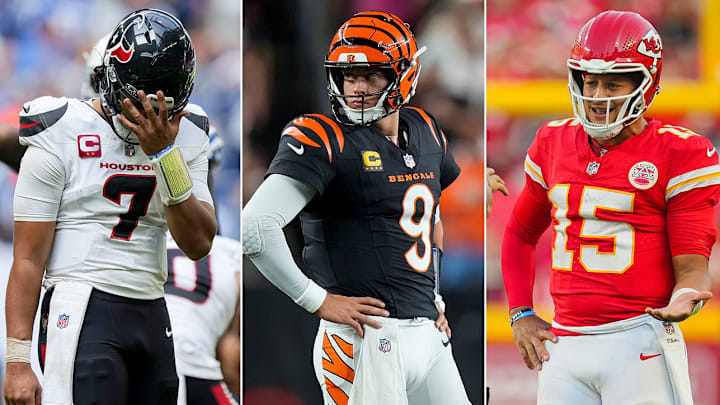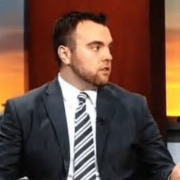Searching For Reasons the NFL’s Passing Game Is in Decline

The NFL is experiencing something it hasn’t known for two decades: a valley in the historic passing-game peak.
For years, the aerial attack was seemingly on an unstoppable, upward trajectory. The game had changed from the ground-and-pound method to drop back and let it rip, whether the down was first-and-10 or third-and-one.
In 1990, only nine teams (out of 28) averaged 200 passing yards per game. Ten years later, that figure rose to 18 (out of 31). Last season, 22 teams hit that benchmark.
Furthermore, it’s now safer than ever to throw, with rules geared toward the passing game. In 2000, only 20 teams completed at least 60% of their attempts. Last year, a whopping 29 did so.
Three weeks into this season, while the willingness to throw remains ever-present, the production is declining in the early going. The reason? There are many, and all are up for interpretation.
“I expect it to improve gradually,” says one NFC offensive coordinator. “The offensive coordinator turnover is at a rapid pace. How many people are coordinators at the same place two or even one year ago? I think continuity is the most common issue. That’s why it’s taking a little bit to get going.”
To that point, just six offensive coordinators remain on their current team for at least a third straight season: Frank Smith (Miami Dolphins), Press Taylor (Jacksonville Jaguars), Mike Kafka (New York Giants), Adam Stenovich (Green Bay Packers), Ben Johnson (Detroit Lions) and Wes Phillips (Minnesota Vikings). Of those teams, only the Dolphins, Jaguars and Lions have paired the same primary starting quarterback to said coordinator over that entire span.
In a league lacking patience more than ever, the whiplash might be catching up to offenses. Especially when a rookie or second-year starter is trying to learn the pro game.
“I go to the development of these young quarterbacks,” says one NFC defensive assistant. “A lot of these guys come from these spread offenses, seven-on-seven era. The under-center, going through your progressions stuff, that is ball. That’s what you really see at this level. And when you go from that spread, Air-Raid, passing 70 times per game with no pass rush, when you come to this level, you don’t get that.”
There’s merit to this notion.
The past three drafts have produced very little in the way of quality quarterback play. We’ve seen the ascension of C.J. Stroud with the Houston Texans, along with the 49ers’ Brock Purdy. Early on, it appears the Washington Commanders have something in Jayden Daniels as well.
But otherwise, Bryce Young, Kenny Pickett, Will Levis, Anthony Richardson, Bo Nix and Caleb Williams, have either struggled or, in the cases of the latter three, are without enough data to decide upon yet.
However, Young was benched after 18 games despite being the No. 1 pick in 2023. Then there’s Pickett, who is already on his second team after being traded to the Philadelphia Eagles this offseason.
“Young quarterbacks want to use their feet more than their mind or arm usually, too,” says the NFC coordinator. “A lot more athletic dudes are playing the game.”
And in Purdy’s case, he had the benefit of not being asked to start immediately, as a seventh-round pick sitting behind Jimmy Garoppolo and Trey Lance. His first start was in Week 12 as a rookie, and he walked into a situation where the roster was loaded and his coach, Kyle Shanahan, also happens to be an offensive savant who has major input on the down-to-down operation.
The volume numbers speak to offenses stuck in mud early on.
Through three weeks, there have been 21,608 intended air yards on 2,980 attempts, for an average of 7.25 intended air yards per attempt. Last season, the IAY/attempt was 7.74, almost a full half-yard down (quarterbacks only).
Additionally, there were 21 times a quarterback had a 300-yard passing game over the first three weeks of last season. In 2024, there have been 10.
However, some analytics are pointing toward patience.
In 2023, 21 teams had positive drop-back EPAs through three weeks. This year, that’s slightly down to 19. Last season, eight quarterbacks finished the first three weeks with a success rate above 50%. We’ve actually seen a small jump to 10 in the early going of ’24.
Still, the overall picture matches the eye test. Passing the ball has been a struggle.
“In my day, we lined up, and you knew what [defense] we were in,” says the NFC assistant. “Find a way to beat us. Nowadays, you see a lot more disguises, lining up in two-shell and come down to Cover 3 and vice versa, line up in Cover 3 and shift to two-shell. Every defense, if you really watch, they try to make every defense seem the same. They want to line up in different stuff but when the ball is snapped, they want the quarterback to think postsnap versus seeing presnap what we’re in. That’s something that’s really going around the league. Let’s make these quarterbacks think on the fly.”
League-wide, through 2 weeks...
— Dan Orlovsky (@danorlovsky7) September 19, 2024
69 Pass TD (fewest since 2006)
7.1 avg tgt depth (lowest on record)
41% designed run plays (highest since 2008)
30 second TOP/play (slowest since 2008)
545 blitzes (fewest on record)
46% 2-high safety % (highest on record)
This wasn’t an isolated thought. It was shared around the league with multiple coaches contacted for this piece, with some believing defensive schemes are catching up to an extent with the offenses which have dominated the NFL in recent seasons with an increase in motion before the snap and more versatile route combinations.
“I think the disguises are better than ever, which makes it more difficult to get to the perfect call,” says an AFC defensive coordinator. “But when the quarterback and receiver or tight end have a relationship, [they] can overcome having [the defense having the] perfect play call.”
Then there’s the matter of offensive line play, which dovetails from the same issue as outlined above for young quarterbacks.
For decades, the college game was far more about running the ball and controlling the tempo than darkening the sky with footballs. Now, with spread offense dominating the college landscape, there’s a lack of pro-style pass sets for offensive linemen.
The result has been 259 sacks through three weeks, a pace of 5.39 sacks per game (for both opponents combined). Consider how that stacks up compared to every season-long rate since 2010:
• 2010: 4.41
• 2011: 4.64
• 2012: 4.56
• 2013: 5.05
• 2014: 4.73
• 2015: 4.63
• 2016: 4.36
• 2017: 4.66
• 2018: 5.00
• 2019: 4.98
• 2020: 4.43
• 2021: 4.57
• 2022: 4.78
• 2023: 5.18
For the better part of 15 seasons, the sacks per game clip has mostly held below five. For the first three weeks, it has skyrocketed past that figure, continuing past the uptick we saw last year.
This is all despite the quick game being far more prevalent than in years past. Dating back to 2018 when Pro Football Reference began charting pocket time per dropback, the evidence is clear.
That year, zero quarterbacks had an average time per dropback less than 2.1 seconds. In 2019, the quickest time was 2.3 seconds. Thus far in ’24, there are 11 quarterbacks beating that time, with four being under two seconds flat, including Josh Allen and Joe Burrow.
Perhaps part of the reason for a significant jump in sacks has to do with defensive personnel and the scouting of it. Players in the front seven are getting increasingly lighter and faster, giving way to the old-school, 1990s era style of having beef up front and thumpers at the second level to take on fullbacks and blocking tight ends.
An argument can be made for T.J. Watt and Aaron Donald being the most dominant defensive players of the past five years. Watt plays at 252 pounds off the edge, while Donald was a relatively miniscule 280 pounds on the interior. Will McDonald IV, who is second in the NFL with five sacks for the New York Jets this season, tips the scales at 236 pounds.
For comparison, Reggie White was listed at 291 pounds. Jared Allen? A robust 270 pounds. Even John Randle, considered diminutive on the inside, weighed 290 pounds, 10 more than Donald.
The AFC defensive coordinator texted that teams are also running the ball more to counteract some of the aforementioned trends. He isn’t sure whether to buy the premise or if we’re starting to enter a new cycle.
“When all is said and done, things will even out. It’s still about being balanced and winning situational football.”
With each week, we’re going to see adjustments while the younger quarterbacks begin to gain their footing. We’ll also see the rust knocked off from some teams that treat the preseason like a toxic wasteland.
But the early going suggests passing the ball is becoming increasingly difficult, something which was unfathomable after the boom we’ve seen in recent seasons.
